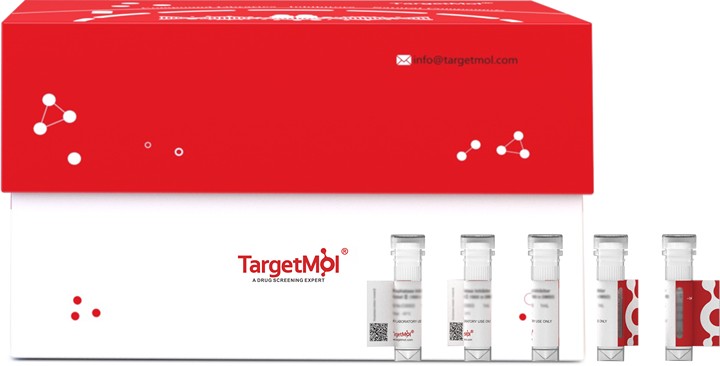- Remove All
 Your shopping cart is currently empty
Your shopping cart is currently empty
TAFA2/FAM19A2 Protein, Human, Recombinant (hFc)
FAM19A2 belongs to the FAM19/TAFA family. FAM19/TAFA family members are chemokine-like proteins. The biological functions of TAFA family members remain to be determined, but there are a few tentative hypotheses. First, TAFAs may modulate immune responses in the CNS by functioning as brain specific chemokines, and may act with other chemokines to optimize the recruitment and activity of immune cells in the CNS. Second, TAFAs may represent a novel class of neurokines that act as regulators of immune nervous cells. And third, TAFAs may control axonal sprouting following brain injury. Human FAM19A2 is 97% aa identical to mouse FAM19A2 and is expressed in the central nervous system (CNS), colon, heart, lung, spleen, kidney, and thymus, however its expression in the CNS is 50 to 1000 fold higher than in other tissues. FAM19A2 gene is a member of the TAFA family which is composed of five highly homologous genes that encode small secreted proteins.

TAFA2/FAM19A2 Protein, Human, Recombinant (hFc)
| Pack Size | Price | Availability | Quantity |
|---|---|---|---|
| 100 μg | $462 | 7-10 days | |
| 1 mg | $3,000 | 7-10 days |
Product Information
| Biological Activity | Activity testing is in progress. It is theoretically active, but we cannot guarantee it. If you require protein activity, we recommend choosing the eukaryotic expression version first. |
| Description | FAM19A2 belongs to the FAM19/TAFA family. FAM19/TAFA family members are chemokine-like proteins. The biological functions of TAFA family members remain to be determined, but there are a few tentative hypotheses. First, TAFAs may modulate immune responses in the CNS by functioning as brain specific chemokines, and may act with other chemokines to optimize the recruitment and activity of immune cells in the CNS. Second, TAFAs may represent a novel class of neurokines that act as regulators of immune nervous cells. And third, TAFAs may control axonal sprouting following brain injury. Human FAM19A2 is 97% aa identical to mouse FAM19A2 and is expressed in the central nervous system (CNS), colon, heart, lung, spleen, kidney, and thymus, however its expression in the CNS is 50 to 1000 fold higher than in other tissues. FAM19A2 gene is a member of the TAFA family which is composed of five highly homologous genes that encode small secreted proteins. |
| Species | Human |
| Expression System | HEK293 Cells |
| Tag | N-hFc |
| Accession Number | Q8N3H0-1 |
| Synonyms | TAFA-2,TAFA2,family with sequence similarity 19 (chemokine (C-C motif)-like), member A2 |
| Construction | A DNA sequence encoding the human FAM19A2 (Q8N3H0-1) (Ala31-His131) was expressed, fused with the Fc region of human IgG1 at the N-terminus. Predicted N terminal: Glu |
| Protein Purity | > 79 % as determined by SDS-PAGE |
| Molecular Weight | 39.7 kDa (predicted); 43 kDa (reducing conditions) |
| Endotoxin | < 1.0 EU/μg of the protein as determined by the LAL method. |
| Formulation | Lyophilized from a solution filtered through a 0.22 μm filter, containing PBS, pH 7.4. Typically, a mixture containing 5% to 8% trehalose, mannitol, and 0.01% Tween 80 is incorporated as a protective agent before lyophilization. |
| Reconstitution | A Certificate of Analysis (CoA) containing reconstitution instructions is included with the products. Please refer to the CoA for detailed information. |
| Stability & Storage | It is recommended to store recombinant proteins at -20°C to -80°C for future use. Lyophilized powders can be stably stored for over 12 months, while liquid products can be stored for 6-12 months at -80°C. For reconstituted protein solutions, the solution can be stored at -20°C to -80°C for at least 3 months. Please avoid multiple freeze-thaw cycles and store products in aliquots. |
| Shipping | In general, Lyophilized powders are shipping with blue ice. |
| Research Background | FAM19A2 belongs to the FAM19/TAFA family. FAM19/TAFA family members are chemokine-like proteins. The biological functions of TAFA family members remain to be determined, but there are a few tentative hypotheses. First, TAFAs may modulate immune responses in the CNS by functioning as brain specific chemokines, and may act with other chemokines to optimize the recruitment and activity of immune cells in the CNS. Second, TAFAs may represent a novel class of neurokines that act as regulators of immune nervous cells. And third, TAFAs may control axonal sprouting following brain injury. Human FAM19A2 is 97% aa identical to mouse FAM19A2 and is expressed in the central nervous system (CNS), colon, heart, lung, spleen, kidney, and thymus, however its expression in the CNS is 50 to 1000 fold higher than in other tissues. FAM19A2 gene is a member of the TAFA family which is composed of five highly homologous genes that encode small secreted proteins. |
Dose Conversion
Sci Citations
Calculator
Tech Support
Keywords

Copyright © 2015-2025 TargetMol Chemicals Inc. All Rights Reserved.


